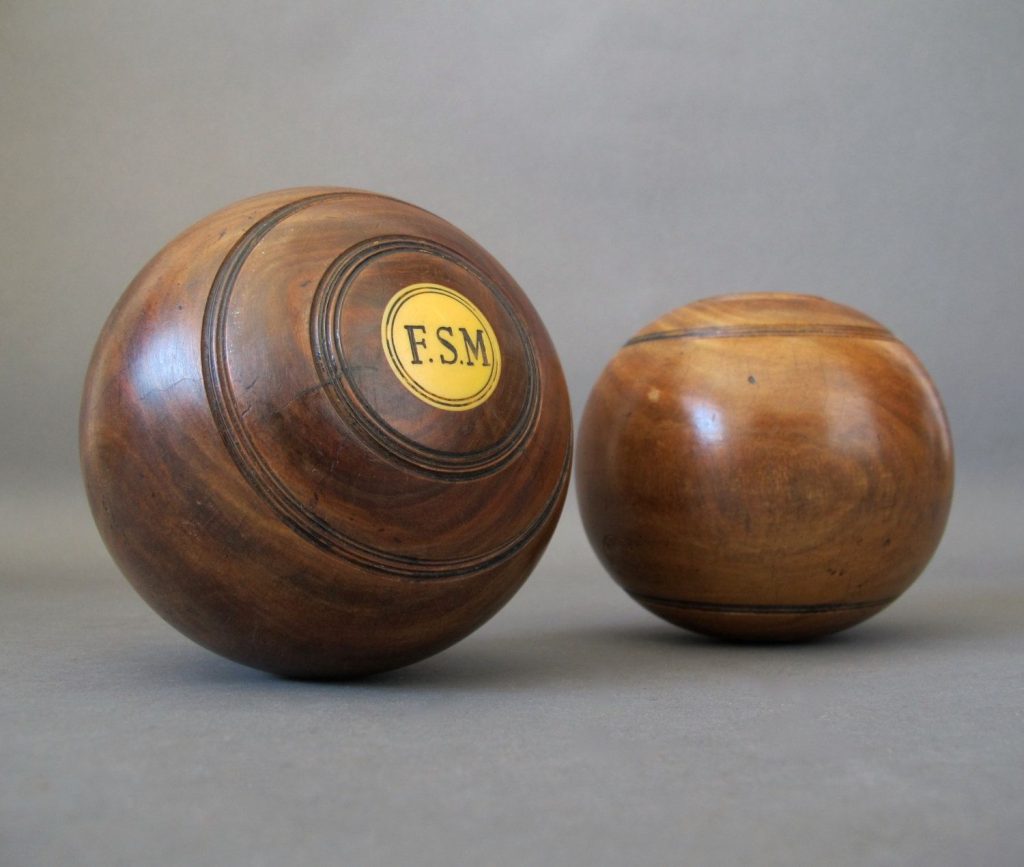Examining the Charm and history of Vintage Wooden Lawn Bowls
Vintage wooden lawn bowls have always had a type of elegance, reminding us of a time when leisurely outdoor games were a popular pastime. The history of these types of bowls dates back centuries, combining craftsmanship and sport. If you’ve ever had the pleasure of seeing these types of lawn bowls, it’s incredible to believe today that they were used back then.

In the early 13th century, the precursor to lawn bowls emerged in England. People played a game known as “bowls” using stones or pieces of wood. As the game evolved, wooden lawn bowls became the preferred choice of equipment. This was due to their smoothness and weight, allowing somewhat better accuracy on old and uneven grassy surfaces. “Wooden bowls were meticulously carved from hardy timbers such as lignum vitae or boxwood, prized for their durability and weight.”1
Making vintage wooden lawn bowls was a slow process, often undertaken by skilled craftsmen. The wood was carefully selected for its density and balanced weight, ensuring each bowl met some kind of standards. “Craftsmen of the past knew the importance of selecting the right wood,” Jaques J. Ainsworth 2. “Their expertise ensured that each bowl had the perfect weight-to-size ratio, crucial for achieving precision in play.”
By the 19th century, lawn bowls had become a sporting tradition in England and spread to other parts of the world through British colonial influence. Wooden lawn bowls continued to dominate the game until the 20th century. At that stage materials like composite plastics began to supplement traditional craftsmanship.
The Change To Composite Lawn Bowls
Around 1918, Mr. W. D. Hensell made arrangements with The Dunlop Rubber Co to manufacture the first composite bowl made of either vulcanite or ebonite. These bowls were manufactured in Little Burke Street in Melbourne. By the time 1924 came around and the use of composites were being highly used, Australia ceased to import lignum-vitae bowls and became a large exporter of lawn bowls instead.
Today, vintage wooden lawn bowls remain prized possessions among collectors and enthusiasts alike. Each bowl tells a story of craftsmanship and leisure, reflecting an era when manual skilled work was the normal. Their enduring appeal lies not just in their functionality but in their historical significance. If you ever get a chance to have a bowl with these vintage sets, you’ll understand how bad the greens were in those days because they have such a wide line on today’s greens.
Like many things these days, we are starting to appreciate the skill of workmanship. We are also starting to appreciate our history and learning about who came before us. Wooden lawn bowls may look old and unusable these days, but without them our sport could be completely different today.
Be sure to checkout our article on Choosing the Right Lawn Bowls. This gives informed information to help you choose what’s right for you.
To learn more, visit the Lawn Bowls wikipedia page.



